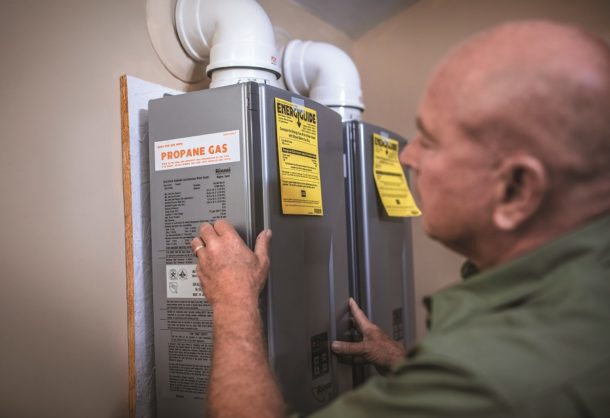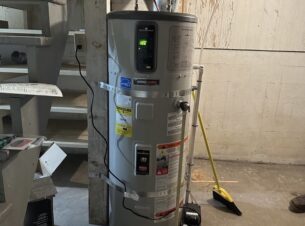Propane systems can help meet the growing demand for sustainable, energy-efficient homes
Homeowner and homebuyer priorities are shifting. The majority of residential customers are seeking high-performance homes—specifically ones with reduced energy costs and lower environmental impacts, according to the Propane Education & Research Council (PERC).
A study commissioned by PERC found that of the 2,200 U.S. residents surveyed, large percentages of people are willing to pay more for an energy efficient home – that’s81 percent of customers remodeling a home, 88 percent of customers buying a home, and 96 percent of customers building a home.
Customers often turn to construction professionals to help them select the right energy systems for their home. This creates a great opportunity for builders and contractors who are well-versed in energy-efficient systems to capitalize on this growing customer base.
Propane can provide a whole-home solution for these customers because propane appliances offer considerable advantages over other systems when it comes to efficiency, performance, sustainability, and dependability.

High-efficiency propane systems offer reduced annual energy costs
Propane is a versatile energy source, powering everything from space and water heating to clothes dryers and cooking equipment. Many of a home’s major systems perform better with propane as the energy source, so homeowners will enjoy greater comfort and lower energy bills compared with all-electric homes.
High-efficiency propane boilers provide energy, cost, space, and carbon savings in both new and existing homes. They offer the versatility to provide heating, hot water, and even snow melt. This versatility also extends to the heating delivery systems propane boilers serve, including hydronic baseboard systems, in-floor radiant systems, or even forced-air systems where the hot water from the boiler (instead of a furnace) is the heat source. Propane boilers are available in a wide range of heating capacities with inputs reaching as high as 299,000 BTU per hour. The ability of propane boilers to supply domestic hot water makes them ideal candidates for residential installations.
High-efficiency propane furnaces deliver significant value and a new level of comfort. They’re affordable, efficient, and environmentally friendly. A high-efficiency propane furnace is rated anywhere between 90 and 98 percent efficient, according to PERC. Over time, propane furnaces also maintain their efficiency better than systems like electric air source heat pumps.
Combining a propane furnace with other clean energy options, like a ground source heat pump (GSHP), provides your customers with added reliability and decreased costs. Hybrid GSHP and propane furnace systems can optimize first costs and long-term energy performance, according to data from PERC. By using a high-efficiency propane furnace to handle heavier heating loads, the ground loop can be significantly reduced, saving thousands in first costs. In one analysis, the hybrid system reduced first costs by around $4,500 and accelerated the overall system payback compared to a GSHP installation with an electric resistance backup.
Propane-powered tankless water heaters provide efficiency by supplying high volumes of hot water with a small footprint. Their compact size saves roughly 12 square feet of floor space compared with many electric systems—a benefit in tight floor plans, including multi-family projects. Their size and direct-vent design make it possible to install these units in tight spaces like closets or outdoors. Because of their long service life and low annual energy costs, propane-powered tankless water heaters have the lowest annual cost of ownership in almost all climates, whether they are installed in new buildings or purchased as replacements.

Propane reduces a home’s carbon footprint
Propane is a low-carbon energy source that produces significantly fewer greenhouse gas emissions (GHG) than most other energy sources. One of the best ways for construction professionals to help environmentally conscious customers reduce their emissions is by incorporating propane-powered appliances into the home.
High-efficiency propane tankless water heaters can produce up to 61 percent fewer GHG emissions, 47 percent fewer nitrogen oxide (NOx) emissions, and 91 percent fewer sulfur oxide (SOx) emissions than electric storage tank water heaters, according to data from PERC. They operate cleaner than electric tankless models, too. In fact, propane tankless systems emit up to 57 percent fewer GHG emissions compared with electric tankless systems in both residential and commercial applications.
And with a propane furnace, homeowners have a cleaner source of home heat than electric furnaces, Energy Star-rated and standard electric heat pumps, and heating oil systems. According to a study from the Gas Technology Institute (GTI), propane furnaces can produce up to 50 percent fewer greenhouse gas emissions than an electric furnace and 22 percent fewer than an electric heat pump.
Further, propane cooking ranges generate up to 15 percent fewer full-fuel-cycle GHG emissions and 83 percent fewer SOx emissions compared to electric ranges. And propane clothes dryers, when compared with electric models, produce up to 42 percent fewer full-fuel-cycle GHG emissions, 23 percent fewer NOx emissions, and 83 percent fewer SOx emissions.
The customer demand for clean, efficient home builds continues to rise. When customers turn to you for guidance, make sure you’re well-versed on high-performance solutions, including propane systems. Visit Propane.com/Residential-Construction to learn more about the benefits of propane.
 Bryan Cordill is the director of residential business development at the Propane Education & Research Council. He can be reached at bryan.cordill@propane.com.
Bryan Cordill is the director of residential business development at the Propane Education & Research Council. He can be reached at bryan.cordill@propane.com.




Join the conversation: